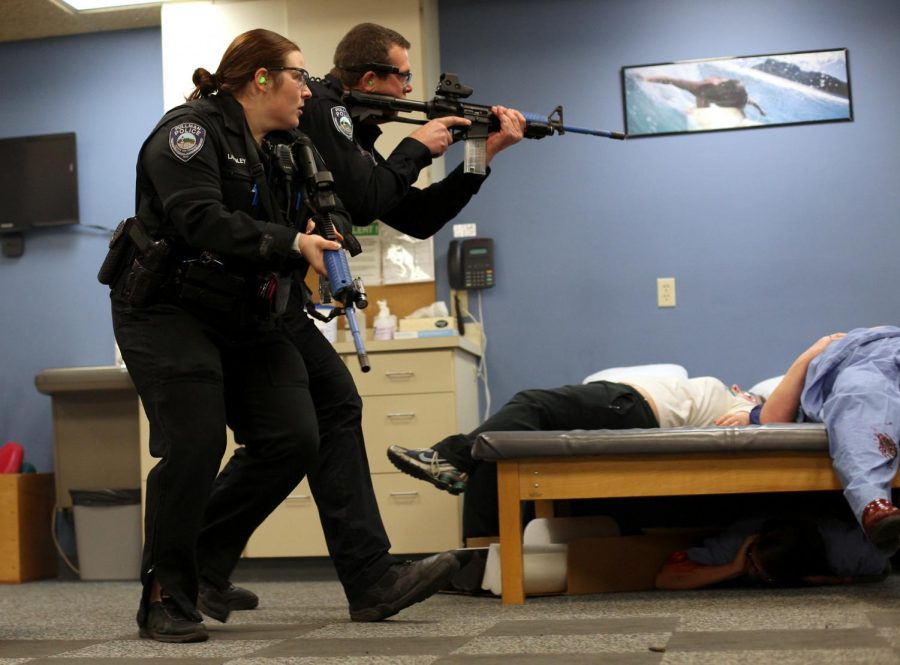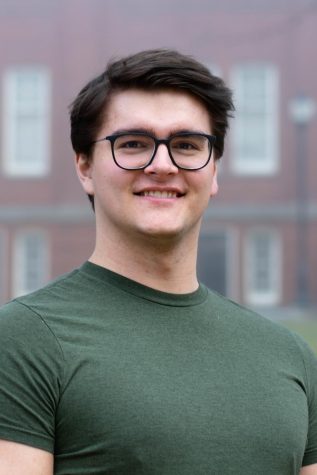Implicit bias training a necessity for law enforcement officers
Current police training is not sufficient to prevent issues related to implicit bias
DANNY DEREGO | Daily Evergreen file
Pullman Police officers clear a room during an active shooter drill Oct. 6, 2013, at the Pullman Summit Therapy & Health Services building.
October 25, 2017
While police officers must complete long and rigorous training to be considered fit for duty, there are always new methods being developed to improve the effectiveness of law enforcement. One such improvement is a new course called Counter Bias Training Simulation, developed by researchers at WSU Spokane.
Training police officers to recognize their biases can prevent mistakes and inappropriate reactions from law enforcement during tense or dangerous situations, said Lois James, assistant professor at the WSU School of Nursing and head of the project.
“Implicit bias is often outside the conscious awareness of the individual. Implicit bias training tries to bring awareness to biases that many people have, such as associating women with homemaking or black people with greater threat,” James said. “The goal of CBTsim is for the trainee to recognize his or her own biases throughout the course of the training, leading to an ‘aha’ moment that could substantially change their behavior from that point on.”
Pullman Police Chief Gary Jenkins said every police officer candidate in the state of Washington is required to complete a 720-hour police academy training that certifies they are able to work in law enforcement. In addition to this, Pullman police officers receive a 15-week field training course to familiarize themselves with the community.
“Besides just the initial training, there’s a lot of ongoing training that our officers are required to have,” Jenkins said, “and then on top of that there’s additional training that our officers receive just to increase their expertise in different areas.”
Even though there is already a great deal of instruction that potential police officers must complete, more implicit bias training will help to make officers and citizens safer.
Everyone has internal biases that sway them from complete objectivity, and usually this doesn’t make a huge difference in everyday situations. For law enforcement, however, the impact of bias is magnified by the stakes of delicate and potentially dangerous situations.
“It can be anything from just someone making mistakes when they do investigation up to something involving lethal force,” Jenkins said. “If we have an officer who is not only well trained just in firearms training, but also in critical, quick decision making, that could ultimately cost someone their life.”
Being better equipped to handle these situations without the distortion of internal bias will help law enforcement to provide more effective service to their communities. Perfect laws are free of discrimination and perfect police officers represent those unbiased laws professionally and with appropriate actions.
“CBTsim targets multiple types of bias that law enforcement officers may experience,” James said. “For example, racial bias, gender bias, age bias, socioeconomic status bias and bias against mental illness.”
It is not enough to just train officers to be effective at using force or responding to crime. There ought to be just as much of a focus on teaching police about how to determine what response is proper for a given scenario. Implicit bias training can help achieve that.
“Some training talks about the difference between letter of the law and spirit of the law,” Jenkins said. “Not just enforcing the law because you can, but enforcing the law in a manner that is going to have the best result.”
This pairing of strong values, common sense and rigorous training helps officers to make better decisions in the field. Developing skills in the area of resisting the influence of personal bias will make officers more effective and safer.
Jenkins said the Pullman Police Department is interested in completing this training soon and hopes to have it done by the end of summer 2018.










